I'm trying to give a certain DIV (which contains other elements) rounded edges,I need the other elements inside the DIV to be affected and get the same attribute.
I don't mean rounded corners which can be achieved with border-radius: Xpx; like this:
and I don't mean such a two-dimensional curve either,like this:

I mean a 3-dimensional curve like this:

A relatively simple simulation:
